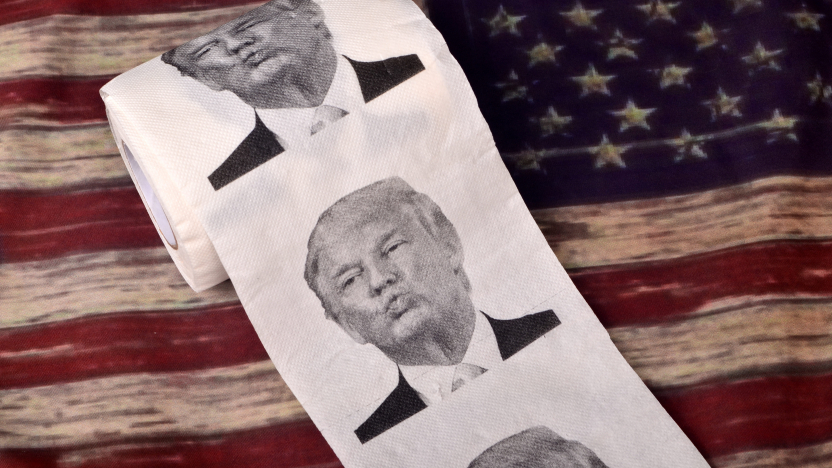Donald Trump and trademark evidence of use

A recent decision by EUIPO's Opposition Division illustrates once again the importance of establishing evidence of use for prior marks, as Florence Chapin explains.
In February 2021, DTTM Operations LCC, which manages the IP rights of former US president Donald Trump, opposed a European trademark (EUTM) application for 'Trump' in classes 10, 32 and 33 based on earlier 'Trump' trademarks. In its June 2024 decision, the Opposition Division of the European IP Office (EUIPO) carefully detailed the conditions for the admissibility and relevance of trademark evidence of use. Notably, the decision considers the earlier marks as registered and used for the registered services.
The importance of trademark evidence of use
While the outcome of the decision by the Opposition Division of the European IP Office (EUIPO) is not surprising, the detailed reasoning on the proof of use submitted is noteworthy.
The EUTM application was filed by Frank Lindner for the word mark 'Trump' in classes 10, 25, 32 and 33. This application was opposed by DTTM Operations LCC based on several earlier 'Trump' word marks in classes 25, 41 and 43. While the applicant partially limited its trademark insofar as it related to class 25, the proceedings continued for the other goods. The application was rejected for the goods in classes 32 and 33 but granted for goods in class 10.
During the opposition proceedings, and according to Article 47(2) and (3) of EU Regulation 2017/1001, the applicant requested evidence of use of the earlier marks on which the opposition was based. As the date of priority of the contested application was 5 February 2021, the opponent had to prove that the trademarks on which the opposition was based were put to genuine use in the European Union (EU) from 5 February 2016 to 4 February 2021 inclusive.
To this end, the opponent had collected numerous and varied items to provide trademark evidence of use, including:
- cancellation decisions recognising the validity of the use of the trademarks in classes 41 and 43;
- extracts from the opponent’s websites;
- reviews from TripAdvisor;
- accolades and ranking regarding golf courses;
- photographs of golf facilities and merchandising products;
- hotel awards;
- articles on former US president Donald Trump;
- bar menus showing wines from the Trump winery;
- ‘Trump’ kids’ menus;
- brochures for Christmas celebrations;
- wine lists from the Trump Winery; and
- Guest Review Awards.
After considering all these documents, the Opposition Division set out – in interesting detail – the conditions for the admissibility and relevance of such evidence.
Validity of trademark evidence of use in the UK post-Brexit
In a preliminary remark, the Opposition Division referenced the September 2020 Communication by the EUIPO’s Executive Director on the impact of the United Kingdom's withdrawal from the EU:
"[E]vidence relating to the [UK] and to a period of time prior to 1 January 2021 will be relevant to maintain the rights in the EUTM and will be taken into account. The significance of that use for the overall assessment of genuine use in the [EU] will progressively decrease – from potentially sufficient to entirely irrelevant – depending upon the extent to which it covers the period for which use has to be established in the case at hand.
"Conversely, evidence relating to the [UK] can no longer sustain, or contribute to, the protection of an EUTM (for example, in the context of proving reputation of an EUTM under Article 8(5) [of Regulation 2017/1001]) as from 1 January 2021, even if that evidence predates 1 January 2021. The EUTM must be reputed ‘in the EU’ at the moment of decision taking."
Accordingly, the Opposition Division concluded that, as regards the proof of use of the earlier 'Trump' marks, evidence relating to the UK and to a period before 1 January 2021 was relevant and had to be considered, given most of the relevant period fell before 1 January 2021.
Admissibility of trademark evidence of use submitted out of time
The opponent submitted additional evidence after the time limit for the substantiation of the opposition, in reply to the applicant’s arguments.
The relevant legislation mentions a discretionary power on the part of the EUIPO to accept elements submitted out of time (Article 95(2) of the Regulation). The EUIPO must exercise its discretion if the late facts or evidence merely supplement, strengthen and clarify earlier relevant evidence submitted within the time limit which relates to the same legal requirement as set out in Article 7(2) of the Commission Delegated Regulation (2018/625) – namely, where both sets of facts or evidence relate to the same earlier trademark, to the same ground and, within the same ground, to the same requirement.
In this case, only the items submitted in the relevant period were considered.
Use of the trademark as registered
The evidence submitted showed the use of the earlier mark as registered, namely the element ‘Trump’ in the body of the text and on the services as follows:

According to Regulation 2017/1001, the use of an EUTM in a form differing in elements that do not alter the distinctive character of the mark in the form in which it was registered (regardless of whether or not the mark in the form as used is also registered in the name of the proprietor) will also constitute use.
The Opposition Division decided as follows:
- The presence of a figurative element depicting a coat of arms or emblem would be perceived by the relevant public as a heraldic symbol evoking values such as tradition, nobility and respectability (see Case T‑859/16), which are in keeping with a five-star hotel chain (which the opponent operates).
- The figurative device of a lighthouse evoked a location by the coast, which was indeed the case of the opponent’s hotels.
- The word ‘Trump’ was the dominant element and that to which consumers’ attention would be drawn because of its initial position in the verbal elements.
Consequently, the Opposition Division considered that the earlier sign 'Trump' had been used essentially as registered, with acceptable alterations within the meaning of Article 18(1)(a) of Regulation 2017/1001.
Validity of use concerning the registered services
The opponent’s earlier trademarks covered 'hotel; restaurant; catering services; hotel reservation' in class 43. The applicant argued there was not enough evidence concerning food and drink services, coffee shops, bistros and bars, catering and restaurant, lounge, café and cocktail services, roughly corresponding to the services for which the opponent’s trademark is registered in class 43. The applicant argued that there was only one bar/restaurant called via “the purely descriptive name” ‘Trump’s Bar & Restaurant’ or ‘Ocean View Restaurant’.
The Opposition Division rejected this argument, basing its reasoning on the Board of Appeal’s decision in Case R 2581/2019-5:
"A hotel is an establishment that provides lodging and usually meals, entertainment and various services for the public. Therefore, food and drinks services are an integral part of the functioning of a hotel and, in particular, a prestige five-star hotel providing exceptional luxury, accommodation, comfort and service. Customers will necessarily identify as the origin of the restaurants, the places where food and drink are provided that are located within the hotel to be the same as the hotel, which in this case are designated by the TRUMP sign."
The Opposition Division concluded that the evidence submitted by the opponent was sufficient to prove genuine use of the earlier marks during the relevant period in the relevant territory for all the services at issue.
Trademark evidence of use and recognition of reputation under Article 8(5)
The Opposition Division recalled that the reputation of a trademark implies a knowledge threshold that is reached only when the earlier mark is known by a significant part of the relevant public for the goods or services that it covers.
The Opposition Division indicated that, while the trademark evidence of use was sufficient in the proceedings for a declaration of revocation on the ground that the marks had not been put to genuine use, the same conclusion could not be automatically applied in the current proceedings under Article 8(5) of Regulation 2017/1001.
Additional evidence beyond that submitted was necessary to establish widespread recognition by the relevant public. Evidence from social media could be used to help indicate the relevant public’s recognition of the marks or their use (provided dates and URL addresses are shown).
The opponent further claimed that the evidence clearly demonstrated that its establishments benefitted from their own separate reputation in respect of their related service offerings, that Donald John Trump also benefitted from his own independent reputation and that the two were intrinsically linked. In this regard, it was noted that a sign does not enjoy any inherent reputation, for example, simply because it refers to a renowned person or event, but only for the goods and services it designates and the use that has been made. Besides, the right to a name is not an accepted basis for an opposition.
The Opposition Division concluded that the evidence in its totality was not strong enough to prove that the opponent’s marks were reputed in the relevant territory. To prove reputation, relevant documentation could have included the market share held by the marks, opinion polls, market surveys or other commercial documents, such as audits and inspections.
Likelihood of confusion
Regarding the risk of confusion between the trademarks, there was no further discussion considering they were identical.
Regarding the goods and services, the Opposition Division reiterated a well-known principle concerning the recognised similarity, albeit to a low degree, between services in class 43 and goods in classes 32 and 33:
"Such goods are used and offered in the context of services for providing food and drink and are therefore closely related to those services. They further coincide in their distribution channels and providers."
The decision provides a useful reminder of several vital principles relating to trademark evidence of use. Trademark owners cannot be reminded enough of the importance of compiling such evidence throughout the lifespan of their trademarks.
For more insights and advice on proof of use, read our guide to compiling trademark evidence of use, speak to your Novagraaf attorney or contact us below.
Florence Chapin is a French and European Trademark Attorney based at Novagraaf in Bordeaux.
This article first appeared in WTR Daily, part of World Trademark Review, in June 2024. For further information, please go to www.worldtrademarkreview.com.
